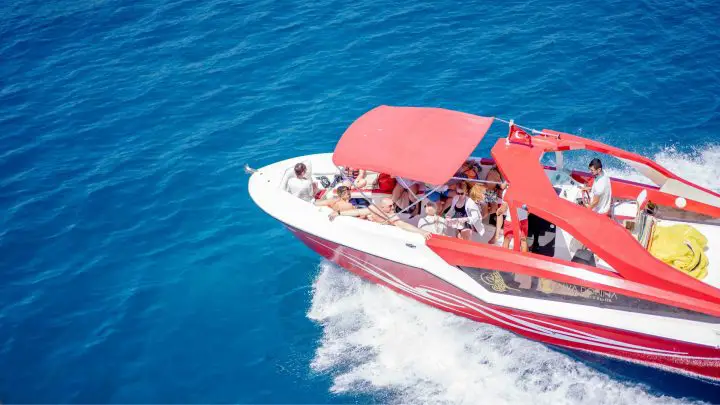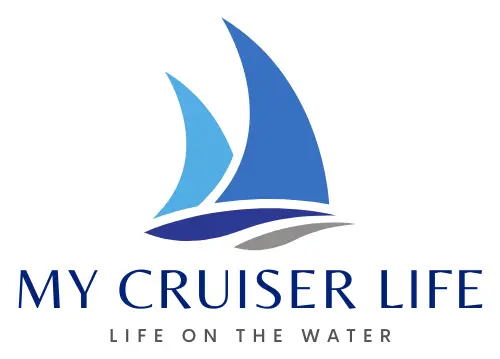You’re cruising through a narrow creek, eyes peeled for that perfect fishing spot, when suddenly – THUNK! You’ve hit bottom, and you’re stuck until the tide comes in. It’s every boater’s nightmare, but one that’s easily avoided when you understand your boat’s draft. Whether you’re navigating shallow backwaters or planning your next marina stay, knowing this crucial measurement can mean the difference between smooth sailing and an embarrassing call to the Coast Guard. Understanding what is draft on a boat affects everything from where you can anchor to which waterways you can explore, making it one of the most important specs to understand about any vessel. We’ll break down what draft really means, how it’s measured, and why it matters so much for safe boating.

Table of Contents
- Definition of Draft on a Boat
- How Draft Is Measured
- Why Draft Matters
- Shallow Draft Boats
- Deep Draft Boats
- Factors Affecting Draft
- Draft Mastery: Your Ticket to Fearless Boating
- FAQs – What Is Draft on a Boat?
Definition of Draft on a Boat
Draft is simply the distance between the waterline and the deepest point of the boat. Think of it like measuring how deep your boat sits in the water – it’s the vertical space your vessel needs from the surface down to its lowest point underwater.
You might hear someone say their boat “draws 24 inches,” which means exactly that – the boat needs at least 24 inches of water depth to float without touching bottom. On boats with direct-drive inboard propulsion or inboard pod drives, draft would be calculated to the lowest point of the gear below the boat, which may be the propeller or the rudder.
The concept is pretty straightforward: imagine dropping a measuring tape from where the water meets your boat’s hull straight down to whatever sticks out furthest beneath – that’s your draft measurement.
How Draft Is Measured
Measuring draft isn’t rocket science, but accuracy matters when you’re navigating tight waters. On outboard- or sterndrive-powered boats, the drive may be raised or lowered, so two draft specifications are often published, one as “drive down” and another as “drive up”.
With the drive up, you’re measuring to the keel – the actual bottom of the boat’s hull. With the drive down, you’re measuring to whatever hangs lowest, usually the propeller or skeg. For jet boats, it’s simpler since the entire drive system is located within the boat, so you’re just measuring to the keel.
Here’s the thing, though – the published draft specification for any boat should be considered “approximate” as it’s a calculation usually made with the boat “dry” (fuel and water tanks empty) and does not take the weight of passengers and gear into account. Smart boaters load their vessel for a typical day and measure the actual draft themselves.
Related: What Is an Outdrive Boat?
Why Draft Matters
Draft isn’t just a number on a spec sheet – it’s your boat’s passport to different waters. Draft is a concern to boat owners who often operate in shallow water, which could be the entrance to a harbor or dock when the tide is out, or a channel from a home dock to open water.
Safety’s the big one here. Knowing your draft helps you avoid grounding, which can damage your hull, bend your propeller, or leave you stranded. Generally, the shallower the draft, the less water depth you need to safely navigate without hitting the bottom.
But it’s not just about avoiding trouble – draft determines your freedom to explore. Shallow draft opens up backwater creeks, tidal flats, and secluded fishing spots that deeper boats can’t reach. It’s like having a backstage pass to the best spots on the water.
Shallow Draft Boats
When you need to get skinny, certain boats are purpose-built for the job. Jon boats are the champions here – flat-bottom boats that are quite often flat-bottom boats or boats with hulls similarly designed to access those skinny water hotspots without running aground.
The shallow draft design allows these boats to navigate through shallow waters effortlessly, making them perfect for duck hunting in marshes or fishing backwater creeks. Some boats with extremely low draft can run in water that is less than 6 inches deep.
Flatboats are another shallow-water specialist. Flats boats, often called flats skiffs, are a unique breed of fishing boat that are relatively small, lightweight vessels used for probing the flats and shallows of southern waterways. Pontoon boats also offer surprisingly shallow drafts due to their buoyant tube design.
Deep Draft Boats
On the flip side, some vessels are built to handle bigger water and carry serious loads. Large ships, like cargo vessels and tankers, are considered deep draft vessels. They require deep water ports and careful navigation to avoid grounding.
Sailboats typically fall into this category, too. For bluewater conditions, the keel tends to be at least 1 meter deep in order to cut through the surface drift layer of the water. That deep keel provides stability and performance, but limits where these boats can safely venture.
Cruising yachts and larger powerboats also tend toward deeper drafts. Their displacement hulls and heavy construction mean they need more water underneath, but they gain seaworthiness and comfort in return.
Related: What Is the Prow of a Boat?
Factors Affecting Draft
Your boat’s draft isn’t set in stone – it changes based on what you’re carrying. The easiest way to reduce a boat’s draft is to lighten its load. Less weight means a shallower draft. Every cooler, every passenger, every gallon of fuel pushes your boat deeper into the water.
- Load weight: the more cargo a ship carries, the deeper its draft.
- Water density: saltwater is denser than freshwater, affecting the draft measurement.
- Ship design: the hull design and shape can influence draft.
Here’s a neat trick: when a boat is moving quickly, it will temporarily rise higher above the waterline, which lowers its draft. This is sometimes referred to as “running draft”. Getting on a plane can reduce your effective draft by several inches, but don’t count on this for navigating tight spots – it’s risky business.
Draft Mastery: Your Ticket to Fearless Boating
Understanding your boat’s draft transforms you from a nervous navigator into a confident captain. You now know the difference between shallow-draft jon boats and deep-keel sailboats, how load affects your measurements, and why accuracy matters. Remember: draft changes with every cooler, passenger, and gallon of fuel you add.
Take time to measure your loaded boat’s actual draft and keep that number handy on every trip. No more guessing in shallow waters or making embarrassing Coast Guard calls. With this knowledge, you’re ready to explore every waterway your boat can safely handle – from backwater creeks to deep harbors. Your boating adventures just got a whole lot bigger and safer.
FAQs – What Is Draft on a Boat?
What is a good draft for a boat?
A good draft depends on your boating needs. Shallow draft boats (under 2 feet) excel in skinny waters and beaching but sacrifice stability. Medium draft vessels (2-4 feet) offer versatility for most recreational boating. Deep draft boats (4+ feet) provide superior stability and fuel efficiency but limit access to shallow areas. Consider your typical cruising waters when choosing.
What is the difference between depth and draft of a ship?
Draft is how deep your boat sits in the water, measured from the waterline to the lowest point of the hull. Depth refers to the water’s depth from the surface to the bottom. Think of it this way: draft is about your boat, depth is about the water. You need sufficient water depth to exceed your boat’s draft for safe navigation.
Why is the draft of a ship important?
Draft determines where you can safely navigate without running aground. It affects marina selection, anchorage options, and route planning. Shallow draft opens access to beaches, creeks, and backwaters, while a deeper draft provides better stability in rough seas. Understanding your vessel’s draft is essential for safe passage planning and avoiding costly groundings that could damage your boat.
What is the benefit of a deeper draft on a boat?
Deeper draft boats offer superior stability, better tracking in rough seas, and improved fuel efficiency at cruising speeds. The additional underwater surface area reduces rolling motion and provides better directional control. However, this comes at the cost of limiting access to shallow waters, beaches, and certain anchorages. A deeper draft is ideal for offshore cruising and rough weather conditions.
